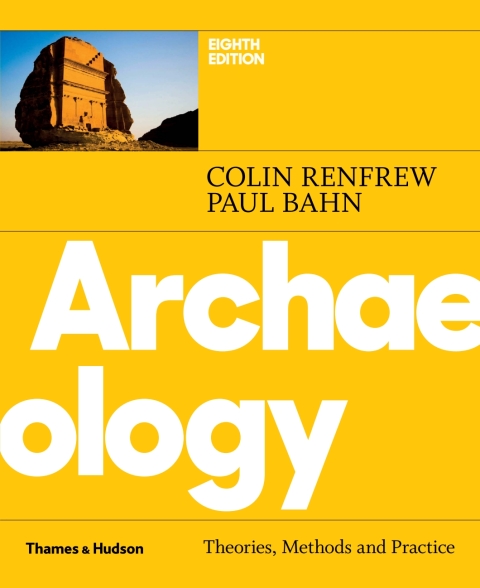Description
Efnisyfirlit
- Part I – The Framework of Archaeology
- 1 – The Searchers: The History of Archaeology
- The Speculative Phase
- The Beginnings of Modern Archaeology
- Classification and Consolidation
- A Turning Point in Archaeology
- World Archaeology
- 2 – What Is Left?: The Variety of the Evidence
- Types of Archaeological Evidence
- Formation Processes
- Cultural Formation Processes—How People Have Affected What Survives in the Archaeological Record
- Natural Formation Processes—How Nature Affects What Survives in the Archaeological Record
- The Archaeological Record and Context
- 3 – Where?: Survey and Excavation of Sites and Features
- Discovering Archaeological Sites and Features
- Assessing the Layout of Sites and Features
- Excavation
- 4 – When?: Dating Methods and Chronology
- Stratigraphy
- Typology
- Linguistic Dating
- Climate Change and Chronology
- Calendars and Historical Chronologies
- Dendrochronology and Annual Cycles
- Radioactive Clocks
- Other Absolute Dating Methods
- Genetic Dating
- Chronological Correlations
- World Chronology
- Part II – Discovering the Variety of Human Experience
- 5 – How Were Societies Organized?: Social Archaeology
- Scale of the Society
- Investigating Hierarchies
- Collective Works and Communal Action
- Heterarchies
- Economic Specialization
- Centralized Societies
- Settlements and Territories
- Further Sources of Information for Social Organization
- The Archaeology of the Individual and of Identity
- 6 – What was the Environment?: Environmental Archaeology
- Investigating Environments on a Global Scale
- Studying the Landscape: Geoarchaeology
- Reconstructing the Plant Environment
- Reconstructing the Animal Environment
- Reconstructing the Human Environment
- 7 – What Did They Eat?: Subsistence and Diet
- Information from Plant Remains
- Information from Animal Remains
- Evidence of Animal-Resource Exploitation
- Assessing Diet from Human Remains
- 8 – How Did They Make and Use Tools?: Technology and Material Culture
- Unaltered Materials: Stone
- Other Unaltered Materials
- Synthetic Materials
- Archaeometallurgy
- 9 – What Contact Did They Have?: Trade and Exchange
- The Study of Interaction
- Finding the Sources of Traded Goods: Characterization
- The Study of Distribution
- The Study of Consumption
- Exchange and Interaction: The Complete System
- 10 – What Did They Think?: Cognition, Art, and Religion
- The Evolution of Human Symbolizing Faculties
- How Symbols Were Used
- Writing
- Establishing Place: The Location of Memory
- Measuring the World
- Planning: Maps for The Future
- Symbols of Organization and Power
- Symbols for the “Other World”: The Archaeology of Religion
- Depiction: Art and Representation
- Music and Cognition
- Mind and Material Engagement
- 11 – Who Were They? What Were They Like?: The Bioarchaeology of People
- Identifying Physical Attributes
- Assessing Human Abilities
- Disease, Deformity, and Death
- Assessing Nutrition
- Population Studies
- Diversity and Evolution
- Identity and Personhood
- 12 – Why Did Things Change?: Explanation in Archaeology
- The Form of Explanation: General or Particular
- Migrationist and Diffusionist Explanations
- The Processual Approach
- Applications of Processual Archaeology
- Attempts at Explanation: One Cause or Several?
- Postprocessual or Interpretive Explanation
- Cognitive Archaeology
- The Individual, Agency, and Material Engagement
- Part III – The World of Archaeology
- 13 – Archaeology in Action: Five Case Studies
- Oaxaca: The Origins and Rise of the Zapotec State
- The Calusa of Florida: A Complex Hunter-Gatherer Society
- Research Among Hunter-Gatherers: Upper Mangrove Creek, Australia
- Khok Phanom Di: Rice Farming in Southeast Asia
- York and the Public Presentation of Archaeology
- 14 – Whose Past?: Archaeology and the Public
- The Meaning of the Past: The Archaeology of Identity
- Archaeological Ethics
- Community Archaeology
- Popular Archaeology Versus Pseudoarchaeology
- Who Owns the Past?
- The Responsibility of Collectors and Museums
- 15 – The Future of the Past: How to Manage the Heritage?
- The Destruction of the Past
- The Response: Survey, Conservation, and Mitigation
- Heritage Management, Display, and Tourism
- Who Interprets and Presents the Past?
- The Past for All People and All Peoples
- What Use Is the Past?
- Glossary
- Notes
- Bibliography
- Useful Websites
- Acknowledgments
- Index






Reviews
There are no reviews yet.